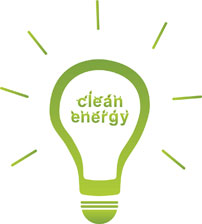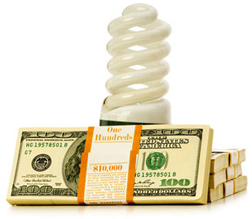
Click here for AEC’s Energy Efficiency Finance Brochure: AEC Energy Efficiency Finance
WHAT ARE “ENERGY EFFICIENCY (EE) PROJECTS*”?
 Energy Efficiency Projects or Retrofits are the replacement or upgrade of old building systems with new energy saving technology and processes.
Energy Efficiency Projects or Retrofits are the replacement or upgrade of old building systems with new energy saving technology and processes.
- New Kits: repair, replace, or upgrade to key internal equipment; insulation; high performance windows; coating materials etc.
- New Controls: Enable the system to operate more dynamically, with individual optimization by floor, and appropriate schedules.
- Integrated Design: Evaluate the impact of multiple systems to be changed or upgraded (Cross Components)
- AEM: Active Energy Management systems that monitor performance and make corrections when necessary; smart thermostats, etc.
- Energy Storage: Peak Shaving to reduce demand in key hours
* Based on the study by “US Building EE Retrofits” by the Rockefeller Foundation and DB
HELPING EE CLIENTS ACHIEVE THEIR GOALS
The goal of many of many of our clients is to go to market with a ‘Turn Key’, white-labeled, financial solution that features the following attributes:
- A clear and easy to understand preliminary set of credit and other criteria so that marketers can give a quick ‘yes or no’ where appropriate (a more efficient use of time and satisfying customers)
- A simple project application accompanied by a definitive due diligence check list
- A quick turn around on project applications
- Uniform documentation
- The ability to pool customers so that an advantage is gained via diversification
- Reasonable pricing
Advanced Energy Capital assists its clients in realizing their business objectives, grow their revenues and their profitability.
ENERGY EFFICIENCY FINANCE:
Case Study: The Empire State Building
- Retrofits can offer strong returns through energy-savings driven cost reductions. A good example is the Empire State Building (ESB).
- From 2011 through 2013 the ESB underwent a complex and high-profile retrofit that produced a 38% reduction in annual energy costs.
- Malkin Properties considered third-party financing to renovate the ESB but ultimately decided to self-finance.
- The ESB retrofit provides an example of the potential returns inherent in energy efficiency retrofits.
- The energy retrofit cost the ESB $13M and created $4.4M of annual energy savings.
Source: DBCCA Analysis, 2012, Jones Lang LaSalle, 2011.
Note: Costs savings are projected from current data.
Split Incentives and Solution
EE Opportunity
- Installing a battery in the basement of a building, that can charge at night (off peak) and discharge during peak hours during the day can save 40%+ of energy and demand charges each month.

Challenge:
- Building owners, by in large, are responsible for capital expenditures
- Tenants are responsible for the energy costs.
- Therefore, a retrofit that has to be paid for by the landlord to benefit the tenants will not happen.
Solution:
- Battery developer leases space in the basement from the landlord – providing the building with income.
- Developer keeps the energy savings as income and charges the building a discounted price for the electricity which is passed through to the tenants
Result: WIN – WIN – WIN: Tenants save money, Landlord earns income on unused space, and AEC earns the financing charges on the installation.
SAMPLE ENERGY EFFICIENCY FINANCE TRANSACTIONS

- Credit Facilities for Small Businesses Accessing Utility-Sponsored Retrofits
- Senior Debt for Implementation of Facility-Wide Energy Efficiency Retrofit Programs
- Energy Services Agreement for the Implementation of Retrofits in Commercial Buildings
- Off-Balance Sheet Financing for Installation of Commercial Energy Storage (Battery)
- Off-Balance Sheet Financing for Boiler Conversion
- Investments (Preferred Equity/Equity/Debt) in Energy Efficiency Services (and Consulting) Firms
- Investments (Equity/Debt) in Energy Storage Firms

